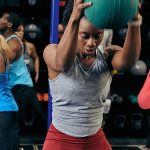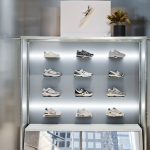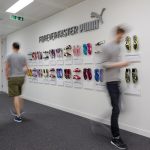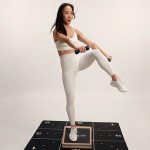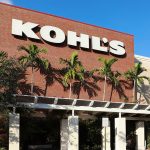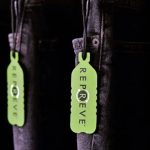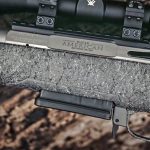It has been argued of late that the recent increase in the export of white collar jobs — on top of the loss of the U.S. manufacturing job base — may result in a society that lacks a middle class, and is instead dominated by the wealthy and the working poor.
If the November retail results are any indication, the shift is in full swing at retail as well as the higher-end retailers, specialty stores and heavy discounters continue to show comp store sales gains while those that have staked out the middle ground have been left with a sluggish consumer base.
Nowhere was it more apparent than in the Department Store sector, where we saw Neiman Marcus, Nordstrom and Saks Fifth Avenue besting the results of their second-tier and mid-market brethren. On the other end of the scale, we found Costco, Ross Stores, Target Stores and Wal-Mart capturing dollars at the discount level, while Sears, Kohls, Stage Stores and Mervyns failed to spark the same level of Holiday shopping enthusiasm.
On the Specialty Store side, The Finish Line and Pacific Sunwear both posted strong double-digit gains on the high side, while DSW owned the footwear energy on the lower end. Caught in the middle were guys like Famous Footwear, Shoe Carnival, The Sports Authority and the Department Stores that rely more on seasonal product that is easily affected by the weather.
The win here goes to those that focused on faster fashion or luxury goods or those that rely on the lowest price. There was no in-between.
Looking at the most recent quarter, The Finish Line also bested mall rival Foot Locker as FINL focused on better marquee product — especially from Nike — and Foot Locker focused on the mid-price point product. For the calendar third quarter, Foot Locker reported that each month comped up in the low single digits, while Finish Line reported a whopping 39% increase in August, a 28% gain in September and a 22% increase in October.
FINL said sales of shoes priced over $100 “doubled compared to last year” in their fiscal Q3, while Foot Locker is putting their energy into filling the $80 to $100 price range with their exclusive 20 Pack program from Nike for Q4. Both retailers — and just about everyone else with a pulse — were successful with the lower end Classics product.
While the mall specialty guys were feasting on the upbeat mall crowds in November, the family footwear guys had difficulty generating traffic to move seasonal product that was impacted for a second month in a row with warmer-than-expected weather patterns throughout much of the country. The bottom line is that people just didnt feel compelled to buy boots.
That certainly changed this weekend after most East Coast metro markets were hit with the first winter storm of the season, but we saw a trade-off since shoppers couldnt get out the door to get the winter goods they need.
Shoe Carnival was hit hardest in November as the retailer continued to fight through a heavy commitment to the boot category and lower traffic. Sales for the month increased 2.3% to $43.4 million, but comparable store sales decreased 7.8 % for the month.
Womens non-athletic was down in the “mid teens” and Mens non-athletic was down in the “high teens”. Kids and Accessories were both said to be “flat”. Boots comped down 20% in November. Athletics was the lone gainer for the retailer, recording a comp sales increase in the “low singles.”
Friday and Saturday after Thanksgiving represent 25% of the sales for November. Comps for those two days were down in the “high teens”. The gross margin was said to be up versus the year-ago month and inventory was down 3% on a per store basis.
Due to the weaker month, SCVL now expects Q4 earnings to fall below the previous guidance of 15 cents to 18 cents per diluted share “unless sales trends improve significantly during the remainder of the quarter.”
Analysts, on average, were expecting 16 cents a share.
Things were a little better over at Famous Footwear, but the family footwear unit of Brown Shoe Company still saw November comp store sales dip 2.9%. Total sales also inched lower on weak seasonal businesses, dipping 0.7% to $74.6 million.
The bright spot in the family footwear chains came again from the DSW Shoe Warehouse division of Retail Ventures, Inc., the former Value City Dept. Stores.
DSW saw total sales for November jump 25% to $63.5 million as comp store sales increased 9.5% on top of a 2.6% gain in the year-ago month. The unit has been on a mission of late, reporting a comp sales increase of 9.1% in October, a whopping 16.9% jump in September, and a 7.6% gain in August, after a 4.5% comp store sales increase in the second quarter. DSW had 138 stores at the end of the month.
Pacific Sunwear continued their apparel dominance of the teen retailers in the mall, showing an 11.7% comp store sales increase for the month of November, matching the same 11.7% gain in the month last year.
The PacSun Stores comped up 11.4% on top of a 10.3% gain last year and the d.e.m.o. stores were up 13.9% on a comp store basis on top of an incredible 25.5% increase in November LY.
At PacSun, Guys comped up 6% and Girls was up 7%. Footwear showed a “strong double-digit” comp increase, a term PSUN uses for an increase of more than 20%. Accessories were up in the “high teens”. At d.e.m.o., Mens was “slightly positive” while Girls and Accessories were both up in “strong double digits”.
PSUN said merchandise margins were “slightly higher” than the year-ago month.
The Buckle was also back in positive territory after a tough October, but to a lesser extent than the nice increase in September. Comparable store sales increased 5.4% for the month, reversing the year-ago 3.4% comp store sales decline. Total sales increased 10.1% to $38.5 million for November.
In the mid-market, things continue to run downhill for Kohls, which reported its first double-negative (two years of negative comps for the same month) comp sales month in memory, posting a 4.4% decline for this year on top of a 3.4% decrease last November. The prior year month was up 25.9% on a comp sales basis.
Kohls saw “high single-digit” comp declines over the first three weeks of the month, but colder weather and a strong start to holiday selling resulted in a “high single-digit” increase the last week of November. KSS is still expecting a “low to mid-single digit” comparable store sales increase for the fourth quarter.
Overall, the 74 companies tracked by Bank of Tokyo-Mitsubishi saw November same-store sales results grow by just 3.6%, under its 4.0% estimate. Thomson First call was looking for a 3.7% gain and measured a 3.4% increase for the month.
“This is the kind of month when you really look at the aggregate and that tells us about the broad demand for holiday goods — and it's the old market-share swapping story,” said Michael Niemira, retail analyst for BT-M.
“Whether the stores pick up in December,” Niemira added, “will depend part on the comparisons (against last year's poor results) and how they're positioned for this holiday season.”
Analysts are also looking at the easier comparisons to last years Q4 period as the economy weakened. Like last year, the week after Thanksgiving again falls in December resulting in a better apples to apples picture for the coming month. But then again, does it really matter if everyone waits until the Saturday before Christmas to pull the trigger.
But the shift in shopping trends confirms what a handful of analysts have predicted in recent months: better goods are hot again and will likely carry the season.

